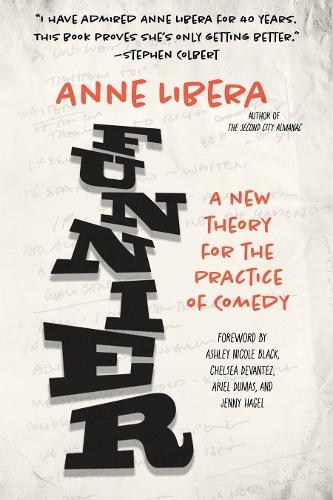Overview
A roadmap for understanding and creating comedy from the visionary Second City comedy director Great comedy can feel ineffable—and unlearnable. Debunking the myth that “either you are funny, or you aren’t,” Libera breaks the magic of comedy down into an innovative theory and practical toolkit. Developed over the course of thirty years as a director for The Second City and professor of comedy studies in their training center, Libera’s approach is effective across stand-up, sketch, film, and television comedy, as evidenced by her powerhouse students: Jordan Peele, Amy Poehler, Kristen Schaal, Steven Yeun, and many more of your favorites. This book starts with a way to think about comedy and then guides you through concrete strategies for making your work smarter, richer, funnier. Libera covers everything from generating material to revising and performing to fostering social connection through comedy. In the book’s final section, Libera draws from her personal life to make a profound case for why future comedy writers should consider the ethics of their art and their responsibility to their fellow human beings in the audience. Readers won’t just be funnier because of this book—they’ll be better people.
Full Product Details
Author: Anne Libera ,
Ashley Nicole Black ,
Chelsea Devantez ,
Ariel Dumas
Publisher: Northwestern University Press
Imprint: Northwestern University Press
ISBN: 9780810149366
ISBN 10: 0810149362
Pages: 376
Publication Date: 15 October 2025
Audience:
General/trade
,
Professional and scholarly
,
General
,
Professional & Vocational
Format: Paperback
Publisher's Status: Forthcoming
Availability: Not yet available

This item is yet to be released. You can pre-order this item and we will dispatch it to you upon its release.
Reviews
""I have admired Anne Libera as a teacher and a director for 40 years. This new book proves to me she's only gotten better."" --Stephen Colbert, American comedian, writer, and television host ""As a student of Anne's in my early days of comedy, she opened up a world of comedic history that helps me in my writing to this day. With Funnier, she continues to demystify and examine comedy for a whole new generation of students."" --Aidy Bryant, American actress and comedian ""I wish I had written Funnier. I might tell people that I did. No, I won't. I mean, maybe? But I wish I had. But you're lucky that Anne Libera wrote it because it's brilliant. Funnier will quickly become your go-to book for creating and analyzing comedy. It expertly weaves together comic theory and practical exercises, allowing the reader to both analyze and create comedy. Whether you're funny or not (and this book will definitely make you funnier), you're going to love this book."" --Matt Fotis, Albright College
Author Information
Anne Libera is an associate professor at Columbia College Chicago, where she created the first program in comedy writing and performance in the country. She teaches and directs for The Second City in Chicago and across the globe, and is the author of The Second City Almanac of Improvisation, also published by Northwestern University Press.




